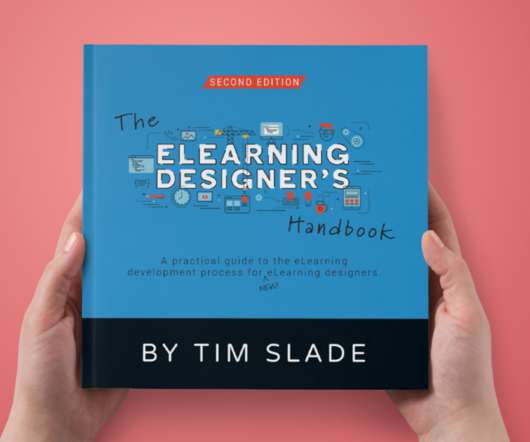I’m Writing a Second Edition of The eLearning Designer’s Handbook!
Tim Slade
JULY 18, 2020
Here’s why: As it stands right now, The eLearning Designer’s Handbook focuses mostly on how to work with your stakeholders and subject matter experts to plan your eLearning project and draft a storyboard.





























Let's personalize your content